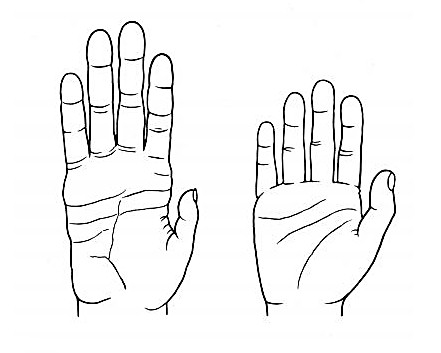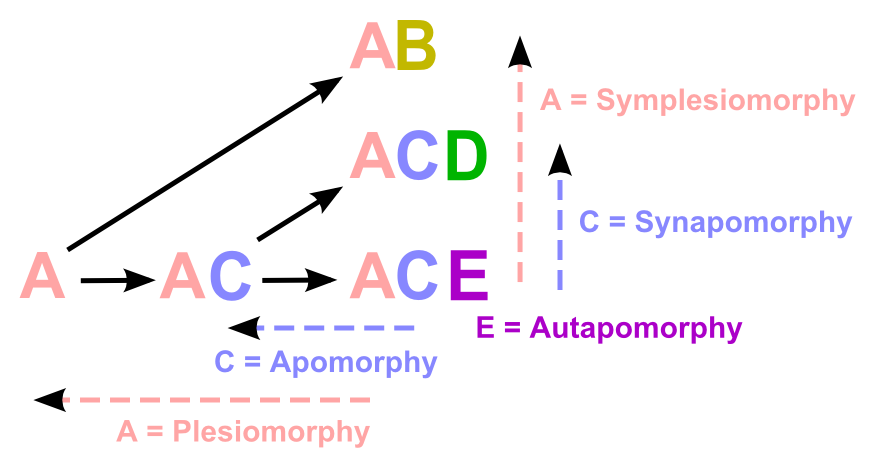At the end of my last Misconception Monday post, I said that I was taking the summer off from that blog category. The reason is pretty simple: I’m running out of misconceptions! As it is, I’ve been playing it pretty loose with what counts as a misconception—there are researchers out there that would say that half of them don’t count as “true” misconceptions. I’ve been using the term to capture what I see as fundamental misunderstandings, and when it comes to evolution, I think we’ve really covered the bases. So I thought I’d take the summer to either widen my definition or come up with a new wonderful blog category. (Any ideas? Don't be shy!)
The thing is, though, I love talking about misconceptions, so the decision made me pretty sad. Luckily for me, though, science writers and communicators don’t seem to be reading this blog. Or, at least, they are offering me ample opportunity to revisit some old favorites.
 This week, I bring you this headline from NBC News: "Chimps Might Have More Evolved Hands Than Humans". The brief write-up explains a finding published recently in the journal Nature Communications (behind a paywall, alas) that the last common ancestor of chimps and humans probably had a hand a lot more like ours than a chimp’s. But the writer of this piece (or his editor) fell into the trap of thinking that just because more evolutionary change has occurred in the chimp hand, the chimp hand is more evolved than the human hand. You see the mistake in the headline, of course, but it’s also in the article: “it’s chimpanzee hands that may have evolved.”
This week, I bring you this headline from NBC News: "Chimps Might Have More Evolved Hands Than Humans". The brief write-up explains a finding published recently in the journal Nature Communications (behind a paywall, alas) that the last common ancestor of chimps and humans probably had a hand a lot more like ours than a chimp’s. But the writer of this piece (or his editor) fell into the trap of thinking that just because more evolutionary change has occurred in the chimp hand, the chimp hand is more evolved than the human hand. You see the mistake in the headline, of course, but it’s also in the article: “it’s chimpanzee hands that may have evolved.”
So according to this, if you were judging only by the hand, you might conclude that chimpanzees are more evolved than humans. That would be just as bad as the more common conclusion that because overall, humans look less like our common ancestor with chimps than chimps do, that means that humans are more evolved than chimps. Neither conclusion, of course, is true. As I reiterated in one of the tree Misconception Monday pieces, all living organisms are exactly as evolved as each other. Any two living species or groups can extend their lineages back through exactly the same amount of time to a common ancestor. The danger with thinking about groups as more or less evolved is that it’s only a small hop to thinking about them as more or less advanced. (The Great Chain of Being, human sacrifice, dogs and cats living together…mass hysteria!)
So how might a journalist accurately explain this finding? The original journal article used some fancy jargon to do it, describing the modern human hand as largely “plesiomorphic.” A trait is called plesiomorphic when it is similar to an ancestral trait. A not-quite-so-jargony way of saying this is that the trait is “basal” or (less great, but still used a lot) “primitive.” Compare this to an apomorphic trait, which is a trait that distinguishes an organism from its ancestor. Apomorphic traits are often called “derived” traits.
Mammary glands are an apomorphic trait of mammals (or even better [sorry, I’m geeking out on vocabulary] it’s a synapamorphic trait or mammals—meaning, it’s a shared-derived characteristic). Mammals have them, the common ancestor of mammals and reptiles didn’t. Having four limbs is a plesiomorphic trait of mammals—mammals have them, but so did the common ancestor of mammals and reptiles.
Have I lost you? Blame Willi Hennig, who coined all these terms with no consideration whatsoever for those of us whose education scanted the Greek roots on which they’re based. But the point is that there are ways of describing the researchers’ findings accurately and without feeding the misconception beast. “Chimp Hands Less Plesiomorphic Than Human Hand,” is not a great headline, I grant you. Neither, really, is “More Evolutionary Changes Have Occurred In Chimp Hands Than Human Hands.” But both are accurate and specific.
Does anyone have a better headline idea? Maybe NBC could have gone for humor. “You’ve Got To Hand it to the Chimps” or “In Evolution, Chimps Gain the Upper Hand” or “Chimps Take Evolution into Their Own Hands”…See if you can do better in the comments section below.
h/t to Steve Bowden for bringing this article to my attention. As a reward, Steve, I’m working on a post about…sloths!
Are you a teacher and want to tell us about an amazing free resource? Do you have an idea for a future Misconception Monday or a new blog category? Seen some good or bad examples of science communication lately? Drop me an email or shoot me a tweet @keeps3.

